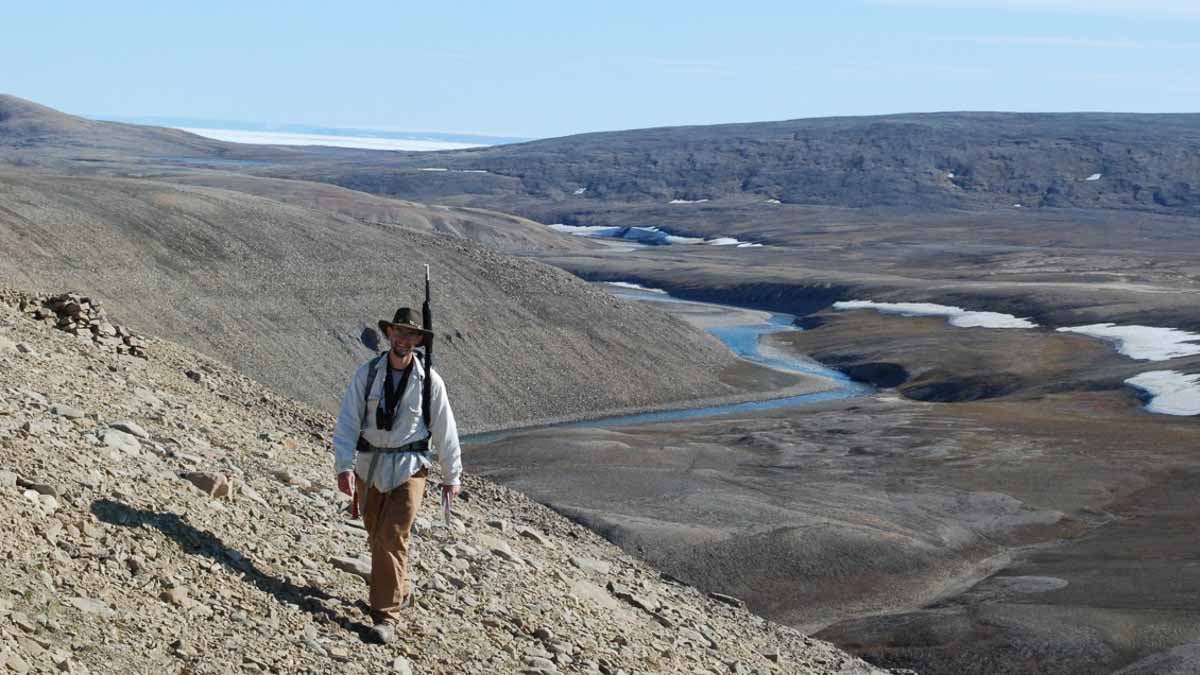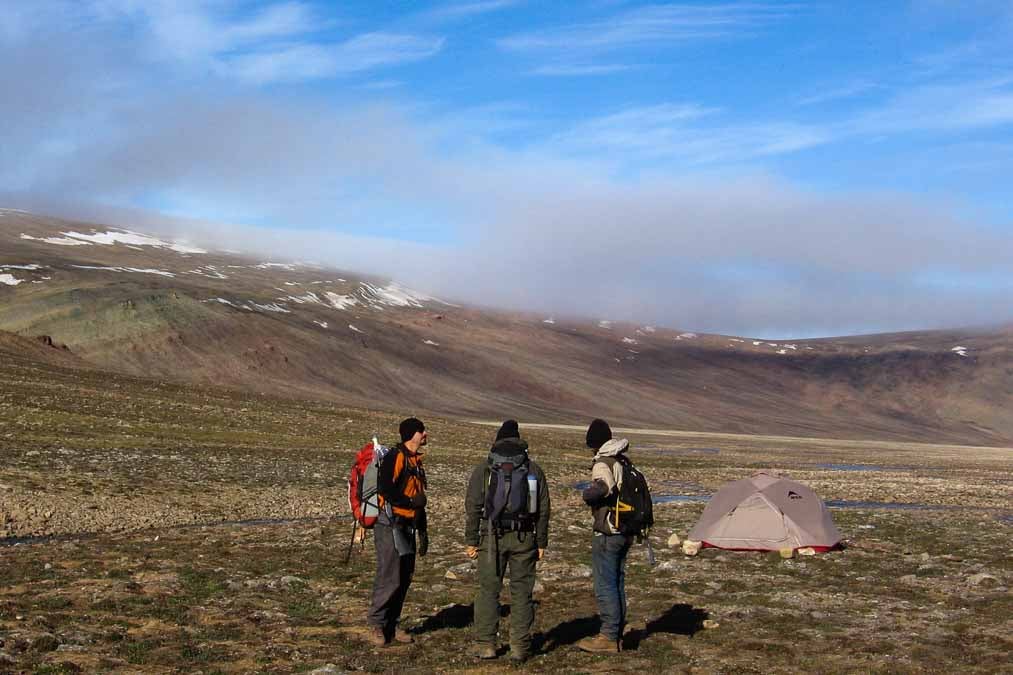Finders keepers doesn’t apply to fossils and bones

Paleontological fieldwork, Nunavut Territory, Canada. (Courtesy of Ted Daeschler)
Paleontologists preparing for excursions have to think about appropriate gear, and clothing, but they also have to make sure all of their paperwork is in order.
This piece is a part of our show on Natural History Museums. Take a look at the rest of our stories here.
Paleontologists preparing for excursions have to think about appropriate gear, and clothing, but they also have to make sure all of their paperwork is in order.
It used to be that U.S. and European institutions went off in a colonial sort of way and would bring materials back, and keep them,” explained Ted Daeschler of the Academy of Natural Sciences in Philadelphia. “Now, no matter what country you are working in, we apply for permits first.” Permissions to be on the land, and to dig. Scientists have to sign agreements on where materials will be taken – and when they will be returned.
Drescher is a paleontologist interested in the Devonian age – he has done a lot of work in the Canadian Arctic, and is now preparing for an Antarctic trip. Whatever he finds, he knows he won’t keep.
“We bring it back, we work on it, we invest a lot in the preparation of the curation of these fossils, and ultimately, they will go back when we’re done with it.
Daeschler recently parted with perhaps his most important find, Tiktaalik roseae, better known as the “fishapod.” The 375-million-year-old fossil fish represents the transition from water to land.Tiktaalik resided at the Academy for ten years before returning to Canada.
“It was hard,” admitted Daeschler. “What I really miss is when people would come to visit the museum and I could show them Tiktaalik, it is such an iconic fossil. But, we did good work on it. You build a foundation, and then next research institution will come and build on what you do.”
Daeschler says digging sites these days also tend to be more collaborative in nature. “Sometimes when we do apply for permits we are asked to train local community. We have had Inuit teenagers come to our digs, and we have learned about their culture, and they have learned how we do tour work.”
Daeschler says natural history museums are also aided by hobby collectors, out hunting for fossils.
“Being a paleontologist at the Academy, I come in touch with people who make this a very serious hobby, they are very valuable to the science, they are really dedicated amateur naturalists.”
He says a lot of these hobby collectors bring their finds to museums, to be evaluated, or to donate them. “We have a relationship, to help them with expertise, it’s important that the collections that people find and organize will eventually make their way into the academy. We worry about collections that never see the light of day, that are not in public collections.”
Daeschler is preparing for an excursion to the Antarctic in December, where he will further his exploration of the Devonian Age.

WHYY is your source for fact-based, in-depth journalism and information. As a nonprofit organization, we rely on financial support from readers like you. Please give today.






